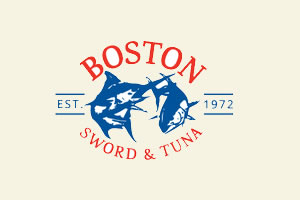
Finfish
Salmon, Wild King
King or Chinook Salmon are the largest of the Pacific species of Salmon and the most valued in the market. They can be easily recognized because of their black lips. They average 20 pounds and have been known to reach over 100 pounds. The King is the only Pacific species which may spawn more than once, giving it the opportunity to grow larger each year it returns to the ocean. Other Pacific Salmon species die immediately after spawning. Pacific Salmon are anadromous, meaning they spend part of their life in fresh water rivers and streams and the other part in the ocean. When it is time to spawn the fish to their birth site to reproduce. These spawning grounds can be 3,000 km or more from the sea and it is a torturous trip for the fish. The market for the fish follows their spawning cycle in each river, so they are marketed as Copper River Kings, Kodiak River Kings, Kenai River Kings, Columbia River Kings and so on. King Salmon has red meat, not as red as Sockeye, but redder than Atlantic Salmon. The meat is moist, full of flavor, with a large flake. Some Kings have white meat and are marketed as “Ivory,” it is a genetic trait and the taste is the same as the “Red” Kings. They typically have a high fat content which is a result of the fish storing fat for their long journey up the river to spawn. The fish stops eating during this trip and lives off the fat stored in its body. This results in an extremely rich flavor and extremely high Omega-3 fatty acids. King Salmon are taken by gill nets at the mouths of the rivers they are returning to spawn in. This is done for maximum fat content and the fish is still healthy, since it is at the beginning of their long swim. There are also trolled King Salmon from Southeast Alaska. These are “ocean run” fish that are not returning to spawn and are just living their life in the ocean. These fish will feed and are able to be caught on a hook by a troller. Salmon is strictly regulated by the Alaskan Department of Fish and Game, The Pacific Coast Salmon Fishery Management Plan (Oregon, California and Washington), North Pacific Fishery Management Council.
















